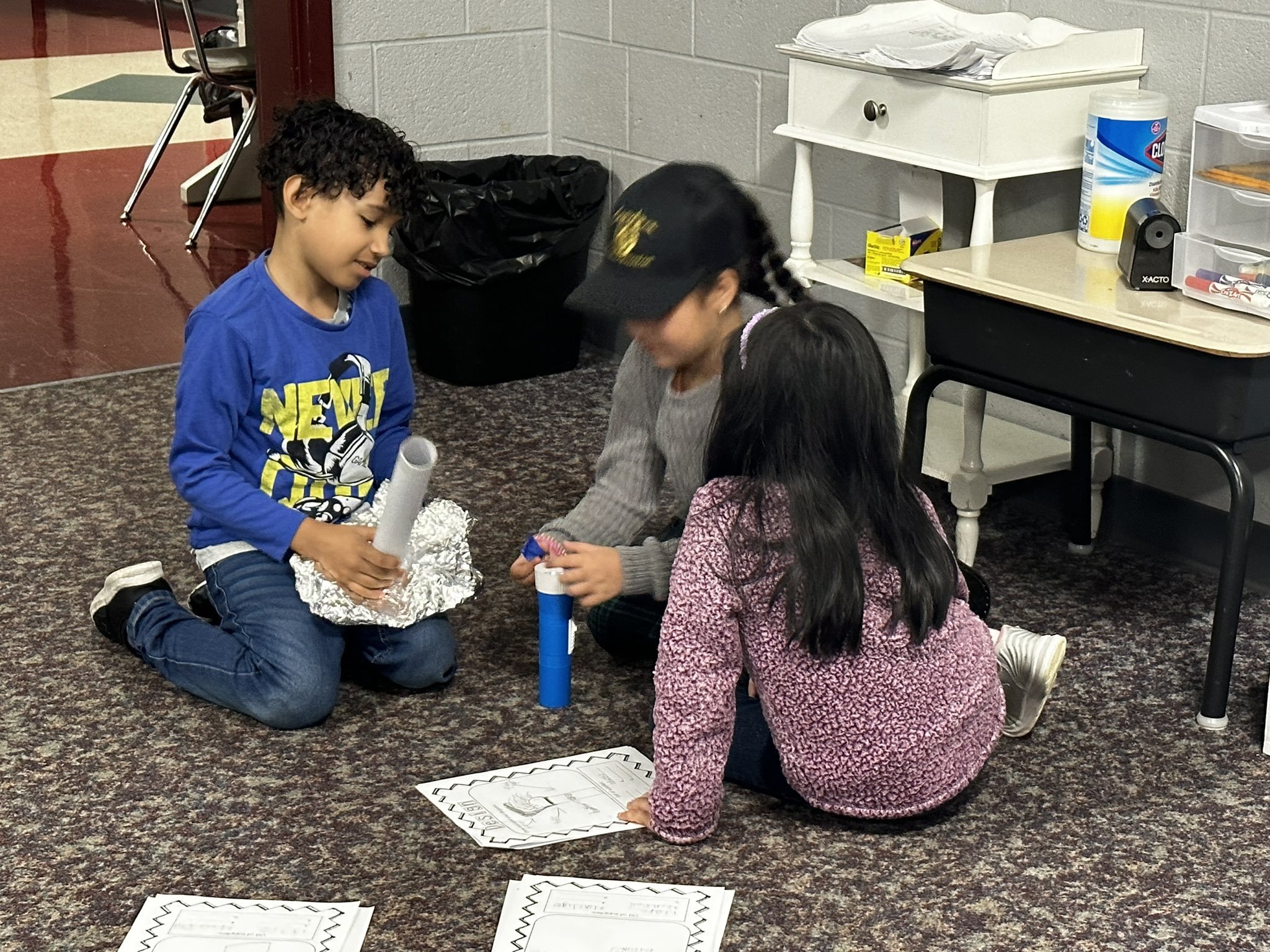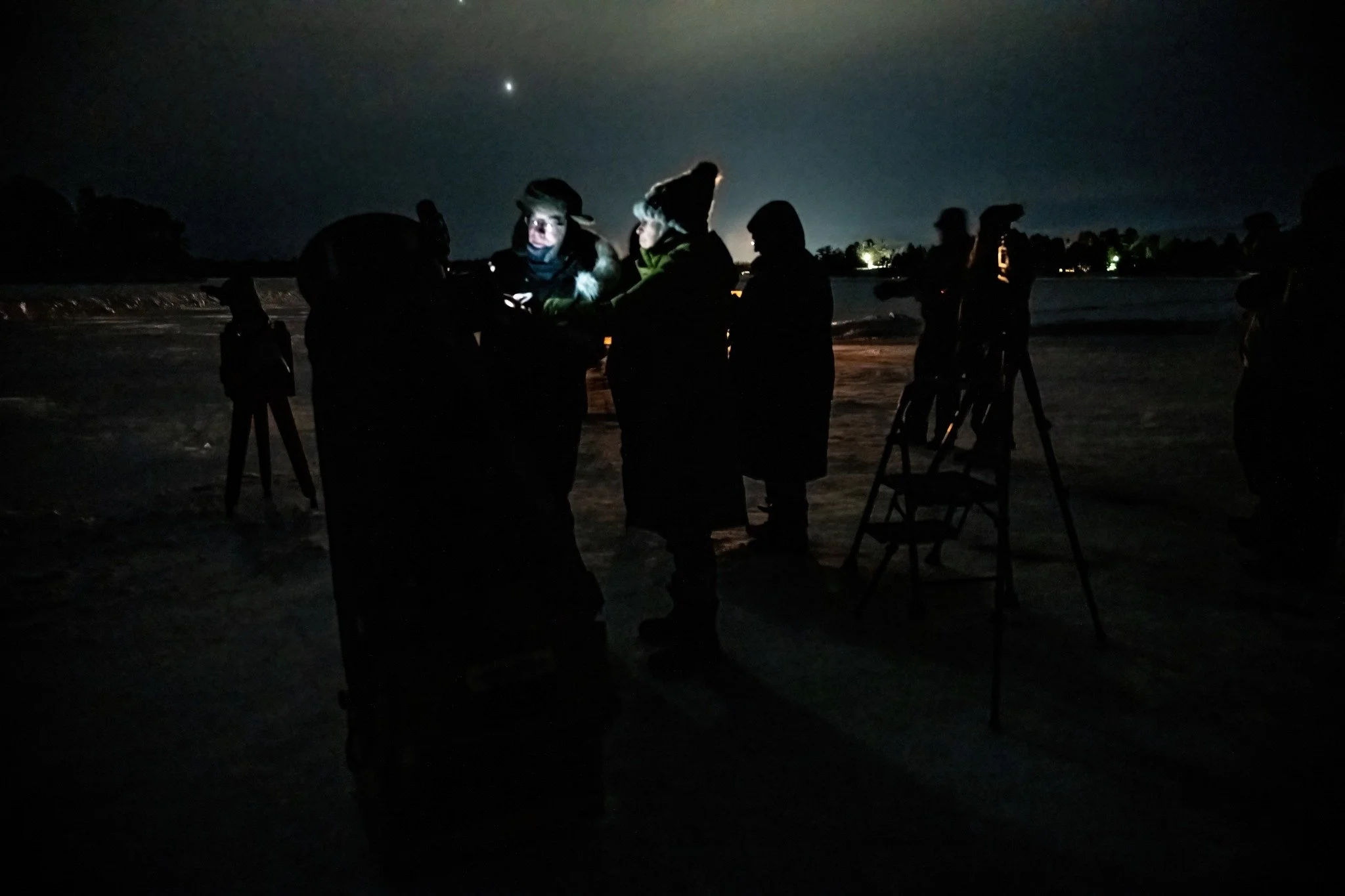Boreal Stargazing Week Captivates 9,000+ Students and Families with Minnesota Night Skies
On a Tuesday afternoon, students across the country gasped as a river of stars illuminated their classrooms. Students were transported to Minnesota’s Voyageurs National Park and Boundary Waters Canoe Area Wilderness - two protected areas that are a part of the largest Dark Sky Region in the world.
“Imagine wearing sunglasses and flip flops on your way to school and a few hours later experiencing -2 degrees,” says LeAnn Simmerman, a teacher at Maury County Public Schools in Tennessee.
Simmerman’s class was a part of over 8,000 students who joined the STEM Challenge during Boreal Stargazing Week - a week of virtual school programs and community events celebrating the importance of dark, starry skies. Students tuned in as Expeditions in Education and a Voyageurs team broadcasted live from the ice roads of Voyageurs National Park. For many, it was their first time experiencing the vast frozen landscapes of northern Minnesota.
“My Tennessee students do not experience winter temperatures that leave lakes frozen deep enough for vehicles to travel on them. They do not see vast landscapes of white snow for months on end. Ice fishing is a foreign concept for them. But on that day, they were taken virtually to that world. The students zooming in got to see a snowy world and hear from the rangers who live there. They were able to ask questions and get real time answers. It was the virtual experience of a lifetime,” shared Simmerman.
Voyageurs team livestreams from the Rainy Lake Ice Road
Through the power of virtual education, the Boreal Stargazing Week attracted over 19,000 registered students from around the country, including classrooms in Minnesota, Maryland, California, Florida, Tennessee, and New Mexico. These programs highlighted northern Minnesota’s starbright skies to get kids interested in the fascinating world of astronomy and support the next generation of stargazers. Humans have looked to the stars for generations to tell stories, navigate through the night, and understand their place in the universe. Yet, dark skies are increasingly rare in the United States. At a time when 8 in 10 children can’t see the Milky Way from their backyards, programs that deepen connections to the stars are more important now than ever.
Gordy Lindgren
Boreal Stargazing Week featured virtual classroom visits with park rangers, amateur astronomers, Indigenous knowledge holders, and education specialists. Students were introduced to the diverse cultural stories of the cosmos and encouraged to engineer their own solutions to protect natural darkness. Students created slogans, presentations, and t-shirt designs advocating for dark sky preservation. Others engineered solutions to light pollution with designs of solar-powered and red-light devices that reduce unnecessary skyglow.
Dacia Jones, CEO of Expeditions in Education, explains these problems students are solving aren’t confined to the walls of a classroom. Park rangers see these projects and are generating ideas from these students. “It’s exciting to see kids thinking they are changing the future, and in reality - they are,” says Jones.
Simmerman explains there is nothing more uplifting than seeing her students engage, create, and believe in themselves: “If you give students a chance, they will create solutions we as adults never imagined. They are truly creative problem solvers.”
The Boreal Stargazing Week was a combined effort by Voyageurs Conservancy, Friends of the Boundary Waters Wilderness, Expeditions in Education, Voyageurs National Park, Superior National Forest, and Starry Skies North. Their goal was to inspire learning and stewardship of Minnesota’s boreal skies with free programs that deepened connection to the wilderness above our heads.
Gordy Lindgren
The week also featured evening excursions in the BWCAW and site-based learning opportunities at Voyageurs National Park. Visitors and local families embraced the wintry chill of February to enjoy brilliant starscapes on guided snowshoe hikes, telescope sessions, and evening ski programs. The allure of astro-tourism attracted attendees from as far away as Georgia and, for many, Boreal Stargazing Week marked their first time recreating in the parks in winter. The week concluded with a documentary premiere of Northern Nights, Starry Skies by Hamline’s Center for Global Environmental Education that brought the north country’s pristine night skies to a large audience in the Twin Cities.
Breanna Trygg, Education Director of Voyageurs Conservancy, hopes future Boreal Stargazing Weeks will continue to inspire individuals of all ages to keep looking up: “Stargazing is the perfect gateway to experiencing Voyageurs National Park and natural spaces. Whether you’re looking up at a starry sky on a clear night, or using a telescope to view the planets, anyone can take in the vastness of our universe and appreciate our place in it. We want all Minnesotans and visitors to be amazed by this experience and become inspired to protect it.”
Gordy Lindgren
Teacher Resources: Bring the Wonder of Starry Skies to your Students
Access FREE dark sky programs for your classrooms. Students will learn about these protected lands, the importance of dark skies, and how we can protect them.
Register for the Dark Sky Classroom to receive a live virtual classroom visit from a dark sky expert and access to standard-aligned lesson plans on Northern Lights, Light Pollution, and Moon Phases
Thank You to our Supporters
Funding support for Boreal Stargazing Week was generously provided by the National Park Foundation and the Minnesota Environment and Natural Resources Trust Fund as recommended by the Legislative-Citizen Commission on Minnesota Resources (LCCMR).









